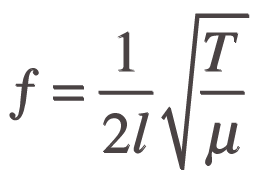Quote:
Originally Posted by Deliberate1

... it takes dramatically more pressure to barre an F chord than it does a B chord on the 7th fret.
|
The strings are too high at the nut.
Quote:
|
I have a set of light Martin Monels and DR Sunbeams Roundcore PB (both 11's). But if that does not do it, a set-up may be in order.
|
The strings will be higher than necessary at the nut regardless of what brand or gauge of strings you put on it. A setup is required for optimal playability.
Quote:
|
So my question is why two guitars with the same strings and neck length and similar fret tolerance would be so different in the way they play with respect to string tension. And if the action is as low as it can go, what adjustments can be made, recognizing that lowering the action does not, if I get this right, affect the tension of the string.
|
There are a number of things that go into the "feel" of how a guitar plays including: string height at nut and saddle; amount of neck relief; fret hight, width and profile; neck shape; string spacing at nut and bridge; scale length and others. Those that are typically adjusted are the string height at nut and saddle and neck relief.
An action that is as low as it can go will just begin to buzz equally at every fret and open string when you pluck it just harder than the maximum you do when playing normally. That varies with the player. It also varies with the quality of the fret work: level frets allow strings to be lower than un-level frets.
The starting point is to determine if your guitar(s) are as low as they will go for your playing. In theory, with proper setup, fretwork, etc., two similar guitars can be setup to play similarly. Differences in stiffness of necks and tops can influence the "feel" of the instrument.
The Mersenne equation relates vibrating frequency ("pitch"), f, to vibrating string length, L, string tension, T, and bulk modulus (mass per unit length):

As can be seen from the equation, if you hold the pitch, vibrating string length and mass of the string constant the string tension is a constant. Practically, you can change the tension by altering the pitch of the string, its vibrating length or its mass. Lower pitch decreases string tension, as does a shorter scale length and thinner less heavy strings.